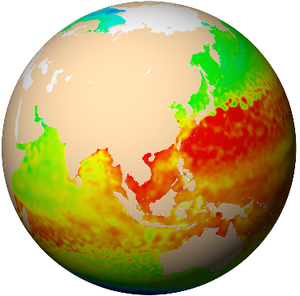Large-scale ocean circulation
A view of the global ocean circulation shows currents swirling around the hills and valleys at the sea surface. In the Northern Hemisphere, currents flow around hills in a clockwise direction and in an anticlockwise direction (the opposite occurs in the Southern Hemisphere) around valleys. These currents form gyres on either side of the equator. Planetary waves are other large-scale phenomena that are less easy to see on an instantaneous map, but nonetheless they too have a global impact.
Further information:
- Altimetry applications in videos: Ocean circulation





